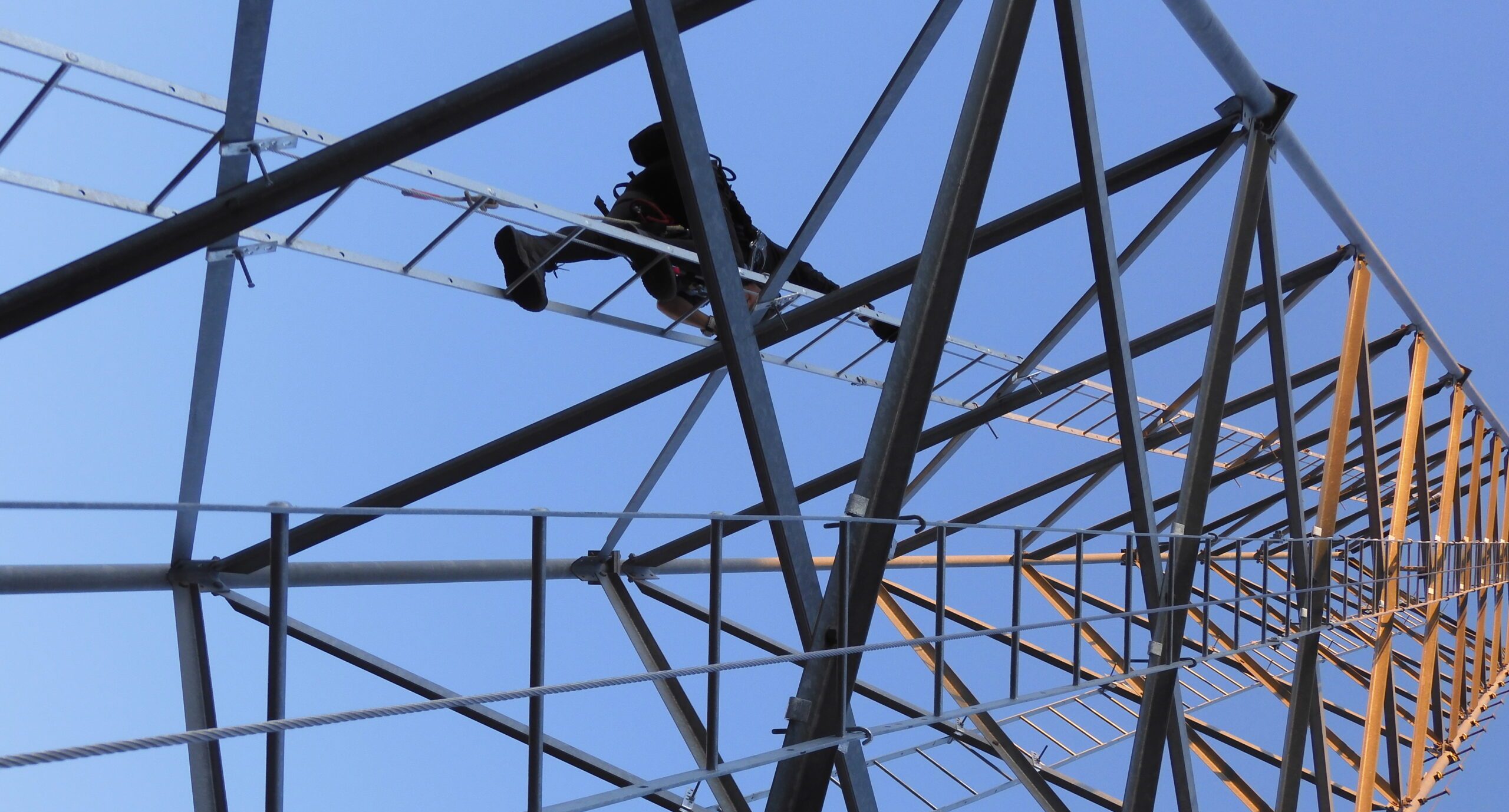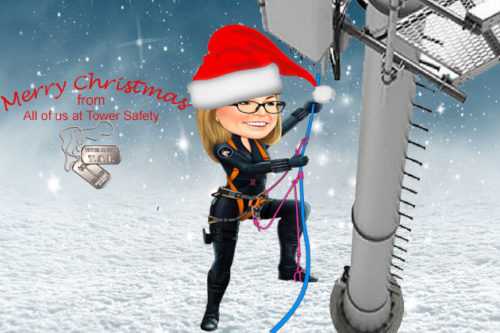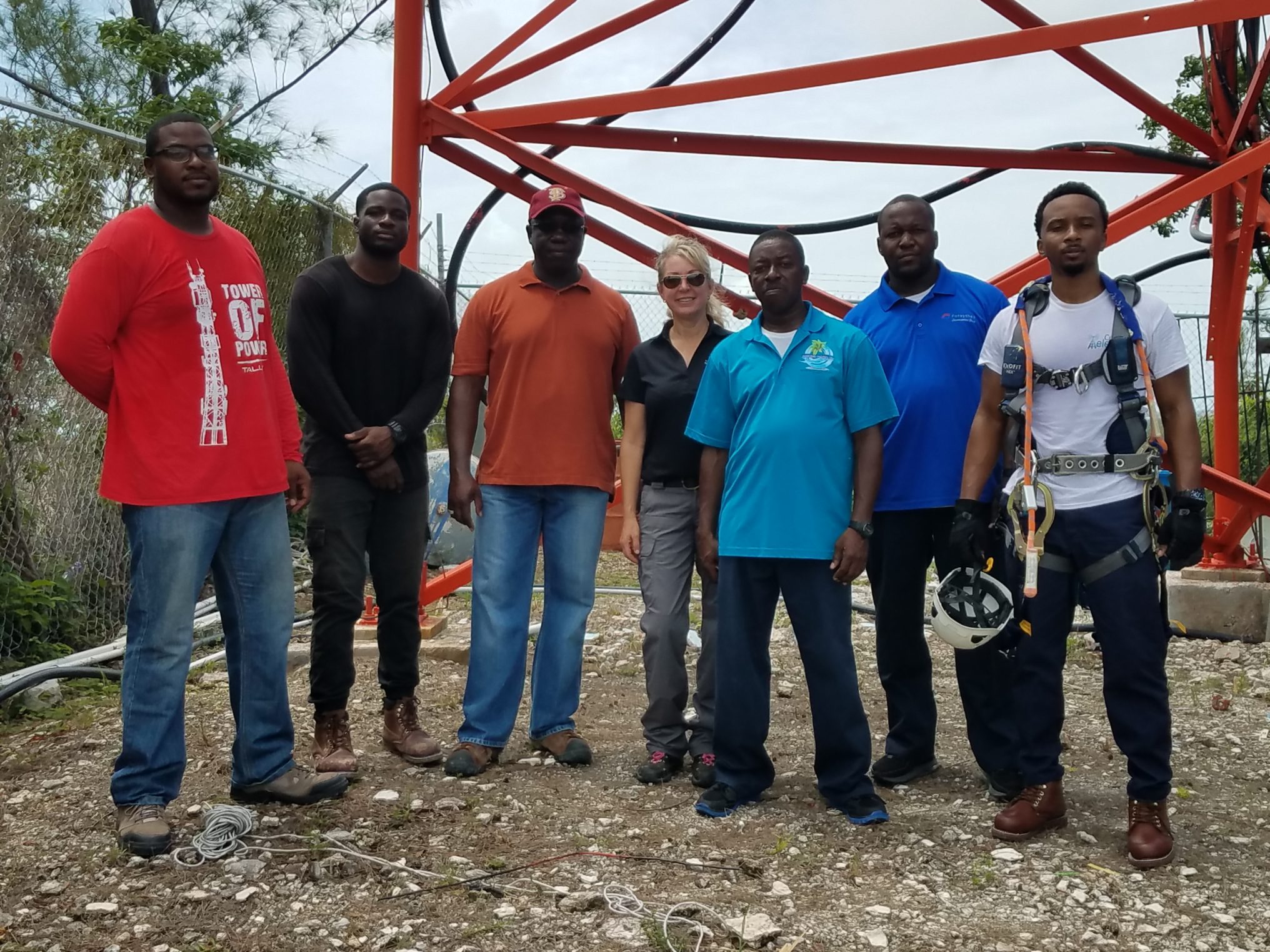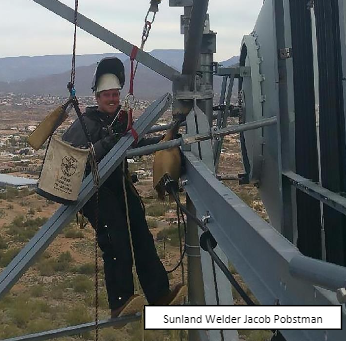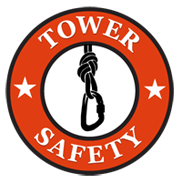Tower Safety & Instruction
Tower Safety & Instruction offers OSHA 10 Hour Course Construction Industry training with an interactive approach that addresses the high priority safety training needs of workers.
Throughout the training, students explore a wide range of topics including laws, guidelines, behaviors, and equipment, all intended to help them their careers to be safe. .
Costs & Payment
Since we believe in the importance of safety training for every student, we are committed to delivering the OSHA 10-Hour Construction Industry training at a reasonable cost to students, educators, and schools.
For more information regarding payment options and instructions, visit our website or email us at kathy@towersafety.com.
Benefit for Students
Once a student successfully completes the OSHA 10 Hour Construction Industry course, the student receives a wallet card from OSHA Training Institute (OTI).
The wallet card demonstrates that the student has the fundamental safety knowledge needed in the workplace.
Course Description
OSHA 10 Hour Course Construction Industry training consists of 18 interactive modules discussing various safety tips and procedures one should follow while in the workplace.
The course includes:
• Introduction to OSHA (Part 1)
• Introduction to OSHA (Part 2)
• Safety/Health Programs
• Crane Operations
• Materials Handling
• Welding & Cutting
• Hand & Power Tools
• Scaffolds
• Excavations
• Stairways & Ladders
• Hazardous Communications
• Personal Protective Equipment (PPE)
• Struck-By Hazards
• Fall Hazards (Part 1)
• Fall Hazards (Part 2)
• Caught-In or Between
• Electrocution Hazards
• Health Hazards in Construction
Each course contains a brief assessment, which must be successfully completed within 3 attempts with a score of 70% or higher. Once all courses have been viewed and the corresponding assessments are passed there is a comprehensive final assessment which also must be passed within three attempts with a score of 70% or higher.
The student will have 6 months to complete the course and will receive their OSHA 10-Hour Construction Industry wallet card by mail in 4-6 weeks.
I. Introduction to OSHA (Part 1)
This course will serve as an introduction to the OSHA Program, what it stands for, and its purpose.
• Explain why OSHA is important to workers
• Explain worker rights under OSHA
V. Scaffolds
This course provides information on the safety concerns and precautions needed when using scaffolds.
• List and define the basic types of scaffolds
• List the five major hazards associated with
II. Introduction to OSHA (Part 2)
This course will serve as an introduction to the OSHA Program, what it stands for, and its purpose.
• Discuss employer responsibilities under OSHA working on scaffolds
• Demonstrate a thorough understanding of the different kinds of fall protection equipment, as well as the different situations in which each type is required
• Demonstrate an understanding of the regulations for safely working on scaffolds
• Describe the responsibilities of a competent person in relation to scaffolds
• Discuss the use of OSHA Standards
• Explain how OSHA inspections are conducted
• Utilize helpful worker safety and health resources
• Explain worker rights under OSHA
III. Personal Protective Equipment (PPE)
The course of this module is to provide an overview of Personal Protective Equipment (PPE) designed to protect your head, face, eyes, ears, hands, feet, respiratory tract, and body from injury and discuss the importance of selecting the PPE that is right for the job you may perform.
• Why PPE matters
• Eye and face protection
• Head protection
• Hearing protection
• Hand protection
• Foot protection
• Respiratory protection
• Full body protection
XXI. Hand & Power Tools
This course will cover how to be safe while using hand and power tools.
• List the hand and power tool safety rules
• Identify the precautions essential to the safe use of different types of tools
• Name the guarding techniques that apply to hand and power tools
IX. Materials Handling
This course covers the safety concerns and necessary precautions you need to be aware of when handling, storing, using, and disposing of materials.
• List main injuries that occur during handling, storage, use, and disposal of materials
• Name the ways to prevent injury when performing manual lifting
• Identify ways to eliminate hazards that may lead to injury when using forklifts, cranes, or slings to handle materials
• List actions that can reduce or eliminate hazards when storing, using, or disposing of materials
IV. Crane Operations
This course provides information on the safety concerns and necessary precautions you will need to be aware of when working around cranes.
• Identify the major causes of crane accidents
• Describe the pre-planning that is required before using a crane
• State the main precautions that need to be taken when working near power lines
• Understand the importance of operator and personnel training
•
V. Fall Hazards Part 1
This course will provide an overview of common fall hazards on construction sites, ways to protect yourself from fall hazards, and actions employers must take to protect workers from fall hazards.
• Recognize major fall hazards on a construction site
• List the leading causes of construction industry deaths
• Describe the dangers of working on unprotected roofs and edges
• Describe the risks of improper scaffold usage
XI. Hazardous Communication
The purpose of this course is to help you be aware of the potential hazards of chemicals that you may encounter in the workplace.
• Why chemical safety matters
• Chemical safety overview
• The “Right-to-Know” Law
• HAZCOM Program
• Material safety data sheets
• Warning labels
• Employee training
• Describe the hazards of not following guidelines for portable ladder safety
• Follow the fall protection guidelines to avoid fall hazards on-the-job
• Describe employers’ five areas of responsibilities for protecting workers
V. Fall Hazards Part 2
The purpose of this training course is to provide an overview of the Occupational Safety and Health Administration’s (OSHA’s) guidelines and different protection methods.
• Describe OSHA’s regulations that protect workers on elevated surfaces
• List the primary fall protection methods
• Explain how guardrails help prevent falls
• Explain guidelines for using safety nets
•
XI. Struck-By Hazards
The purpose of this course is to provide students with the information that will enable you to recognize common struck-by hazards on construction worksites.
• How to identify common struck-by hazards
• Describe types of struck-by hazards
• Protect yourself from struck-by hazards
• Recognize employer requirements to protect workers from struck-by hazards
XIX. Welding & Cutting
This course provides information on safety concerns and precautions when using welding and cutting equipment.
XIV. Excavations
This course provides information on the safety concerns and precautions when working in and around excavations.
• Identify the greatest risk present at an excavation site
• Recognize the three methods of protecting employees from cave-ins
• Name three hazards to people working in excavation areas and ways to eliminate them
• Describe the function of a competent worker at an excavation site
• Describe the requirements placed on employers by the General Duty Clause
• Demonstrate a thorough knowledge of the safe use of equipment associated with gas welding and cutting
• Demonstrate an understanding of the safe use of equipment associated with arc welding and cutting properly
• Describe the various methods of ventilation and protection used in various working environments
• Describe the dangers associated with both chemical and physical agents when welding and cutting
•
XVI. Safety/Health Program
This course will serve as an introduction to health and safety
• What is safety?
• Why safety matters to you
• Your legal rights? What is OSHA?
• Ergonomics
XIV. Caught-In or Between Hazards
The course of this training module is to provide information that helps students recognize common caught-in or caught between hazards in your work environment.
• Identify common caught-in and caught-between hazards
• Describe types of caught-in and caught-between hazards
• Protect yourself from caught-in and caught-between hazards
• Recognize employer requirements to protect workers from caught-in or caught-between hazards
XIV. Electrocution Hazards
This course will provide information that helps students recognize and avoid common electrical hazards in your work environment.
• Identify common electrocution hazards
• Describe types of electrocution hazards
• Protect yourself from electrocution hazards
• Recognize employer requirements to protect workers from electrocution hazards
XIV. Health Hazards in Construction
This course is to help students recognize potential health hazards in their workplace environment.
• List the four types of health hazards on construction sites
• Distinguish between acute and chronic hazard exposure and illnesses
• Describe the characteristics and effects of various chemical hazards
• Describe the characteristics and effects of various physical hazards
• Describe the characteristics and effects of various biological hazards






